
This is a fun interactive game that allows students to practice their addition, subtraction, and multiplication facts.
- Subject:
- Mathematics
- Material Type:
- Interactive
- Provider:
- Sheppard Software
- Author:
- Brad Sheppard
- Date Added:
- 02/26/2019

This is a fun interactive game that allows students to practice their addition, subtraction, and multiplication facts.
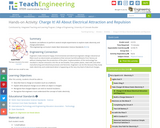
Students use balloons to perform several simple experiments to explore static electricity and charge polarization.
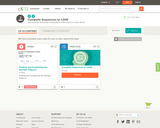
This short video and interactive assessment activity is designed to teach third graders about finding and completing the number patterns.

This is a story about a potato…not any type of potato though. A potato who sits in the exact same spot on the couch every day using all of his devices (tv, phone, video games, etc). It’s a perfect life until the power goes out one day, and he has to find other things to do. He learns that he needs to have a balance between screen time and activities in the real world. Your job as an engineer is to design a gadget that will remind the potato when he needs to ditch the screens and get up and move. (You must incorporate your iPad.)
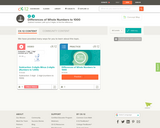
This short video and interactive assessment activity is designed to teach third graders an overview of subtraction (numbers to 1,000).

This short video and interactive assessment activity is designed to give fourth graders an overview of subtraction (numbers to 1,000).
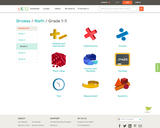
CK-12's Elementary Math Grade 3 is a series of videos and interactive videos designed to teach basic math concepts to 3rd graders. Concepts covered include Addition and Subtraction, Multiplication, Division, Place Value, Decimals, Time, Factors and Multiples, Money, Measurement, and Geometry.

This short video and interactive assessment activity is designed to teach third graders about fact families (numbers to 1,000).
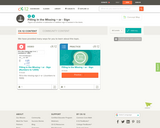
This short video and interactive assessment activity is designed to teach third graders about filling in the missing + or - sign.

This is a fun interactive game that allows students to practice their basic math fact fluency.

Students will visit Google classroom and read about the different components of the field guide. Students will research their animals using the provided websites. Upon completion of the packet, students will begin working on a video script to communicate with their audience about what they have learned and how they can work together to help animals and their habitats. A poster can also be made for those wanting to do further research on the challenges that face their animals and habitat. This lesson was developed by Ashley Harris as part of their completion of the North Carolina Global Educator Digital Badge program. This lesson plan has been vetted at the local and state level for standards alignment, Global Education focus, and content accuracy.
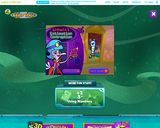
Students have 60 seconds to estimate and add two and three digit numbers to solve the puzzle.

This lesson details how to facilitate a number talk. The target is 3rd grade students with addition, but this could also be used in 4th grade or at the end of 2nd grade. This task is remixable to provide more supports for various learners.

This lesson provides opportunities for students to solve multi-step problems and explain their problem solving strategies. This is remixable to provide additional supports for various learners.

This lesson describes how to facilitate a number talk for subtraction. The target is 3rd grade students, but this could be adapted and used in 4th grade or at the end of the year in 2nd grade. This is remixable to provide more supports for various learners.
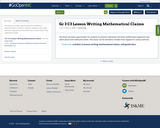
This lesson provides opportunities for students to examine what it means to subtract. Students solve tasks and write arguments and mathematical claims about how subtraction works.

This lesson provides opportunities for students to solve multi-step problems and explain their problem solving strategies. This is remixable to provide additional supports for various learners.
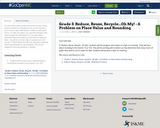
You have been asked, by the Service Club at your school, to pass out flyers on recycling in your county. Because your county is big, it will take you a while to reach every house. To make your flyers, you need lots of paper. Each ream of paper has 500 sheets in it. You will need to determine how many reams you will need to make your flyers. You will also submit a flyer to passed out to the county.
***NOTE
When this PBL was originally created NC had not yet adopted it's new standards. This can be adapted to the new standards, if needed.
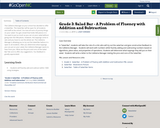
The Cafeteria Manager at your school has decided to offer a Salad Bar. The Salad Bar will be open for all students and staff at the school. You love all sorts of yummy things on your salad. You get a bowl that holds 568 pieces in it. You want to put as much as you can on your salad without going over the 568 pieces. However, the toppings come in sets and you have to use the whole set. The Cafeteria Manage is allowing you to try out the Salad Bar before it is open to all students. After you determine what toppings you can put on your salad, the Cafeteria Manager wants to hear from you. What are the pros and cons of the Salad Bar? Be sure to offer any suggestions. You feedback is greatly appreciated.

In this lesson, students find and write place value.